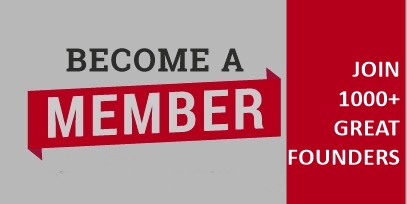I’m sure many of you grew up with parents urging you to pursue higher education so you could have a better life. They realized the game of life and the importance of status and made every attempt to lead you to a promising careers like doctor, lawyer or accountant or in the trades.
However I think what they kept forgetting was teaching their children how to sustain mental toughness, spot opportunity and seize opportunities.
In an ever changing world the only way to win it seems is to become disciplined, smarter, and experiment faster.
Simply, you have to evolve faster.There are no guarantees of success on the choices and actions you take.
***The list of ways to spot opportunity were originally published and written by a Paul B
10 Ways to Spot an Opportunity
Here are 10 ways you can use to find a hole in the marketplace:
1.Upgrade. Take a basic product and make it special, either by adding value to it or marketing it as a status product. Luxury automobiles and designer blue jeans are examples of what were once pedestrian products that have been given cachet.
2. Downgrade. Take a product that has always been associated with status and reduce it to its underlying concept.
Examples: [Blanked] Airlines eliminated all the frills that came with an airplane ticket (meals, magazines, etc.) and was one of the first companies, back in the 1980s, to reduce flight to simple transportation. The Wright brothers didn't show movies aboard when they took off from Kitty Hawk, and neither did [Blanked]. (Some 30 years later all the major airlines, unfortunately, are copying the [Blanked] model, but still charging full fare.) If you look on the supermarket shelves, you now see everything from generic beer to no-name cooking oil competing against Budweiser and Crisco. Offering a stripped-down version of a popular product or service could be one way for you to go.
3. Bundle. There are certain products or services that almost always go together. Instead of requiring people to pay for them separately, combine them. Cell phones now come with cameras. Printers today usually bundle in a fax machine and scanner. People have combined peanut butter and jelly in a jar. What could you put together?
4. Unbundle. Just the flip side of what we discussed above. Ask, what products have been so gussied up that you can sell the individual components? Life insurance is a good example. It became common practice in the industry to combine the protection component with a savings element. That became the basic insurance policy. Term insurance, which eliminates the savings component and just provides protection, has become very popular.
There would seem to be a market for the world's best cell phone that handled calls flawlessly and did nothing else. And could you make a machine that handled nothing but word processing?
5. Transport. If a product sells in one area, take it to another. If you stop and think about it, that is what importing and exporting are all about. But you can go beyond just selling white wine from France in New Jersey or opening a Chinese restaurant in Kansas City.
For example, Europe and California for whatever reasons tend to create new products and ideas ahead of the rest of the world. How about someone from Massachusetts taking a drive up and down the coast of California looking for new ideas in fast food, entertainment, whatever? Once you find what is working in Modesto, why not try it back home in Marblehead?
6. Mass-market. Take an idea that has been in one narrow area and see if it will scale. This is what every company does when it takes a product "national." Once upon a time, the people who made extra-virgin olive oil only sold through "gourmet" shops. Today, you can find endless varieties in Walmart and Sam's Clubs.
7. Narrowcast. We borrow the term from television. When cable television was in its infancy, its broadcasters realized they all shouldn't try to reach mass audiences. For all their faults, the three major networks back then did a fairly good job of serving the widest audience possible.
The solution for cable operators was to narrowcast, or gear shows on a given channel to a particular audience. Thus so, you have channels that show nothing but sports or movies or even the weather or content related to specific religions.
If you are up against a wide number of competitors in your field, and the potential audience is huge, you might be better off aiming for one specific segment instead of trying to reach everyone. We now have stores that sell just light bulbs or batteries. It seems there's no segment too small to support a company or even an industry.
8. Think big. Instead of carrying just one product, carry everything related to it. Think of the home improvement stores like Lowe's or Home Depot.
9. Think Small. While huge stores, such as Lowe's, can offer more merchandise, they can't offer the depth of selection in each line that a true connoisseur demands. And they usually don't have a trained staff to offer advice. You can succeed by offering more in a small field like tile, rugs, or cabinets. (This could be considered a form of narrow-casting.)
10. Price. At first blush, you may not think of competing on price as niche finding, but it is. Remember we are talking about competing differently, and price is clearly one way to differentiate yourself from your competitors. Yes, it is a dangerous approach--you are willingly given up margins--but it is an option.
***FREE marketing ebook about future world of marketing called: The Art of Simple Sustainable Marketing in 2015, 2020, & Beyond

















0 click to comment:
Post a Comment